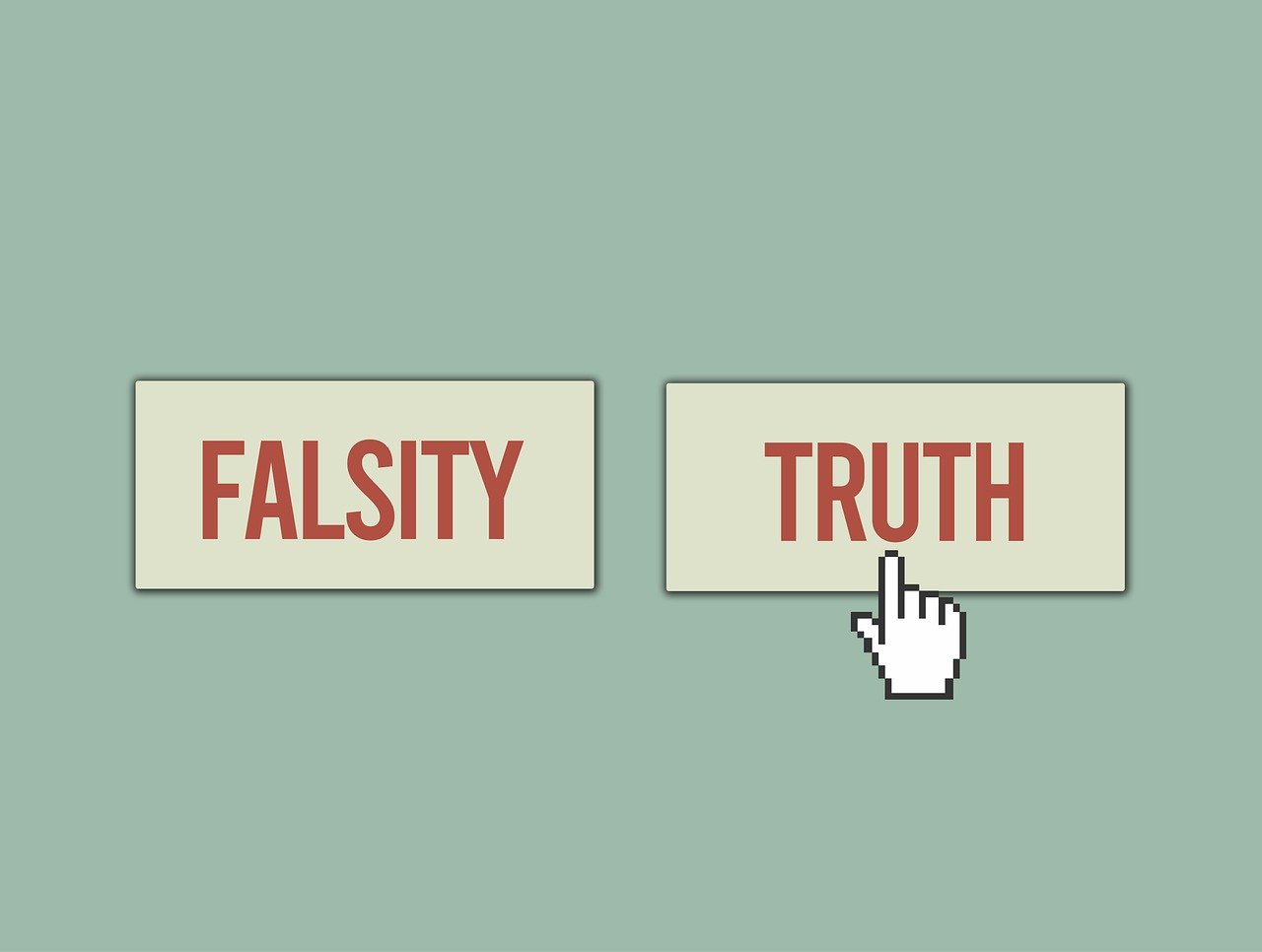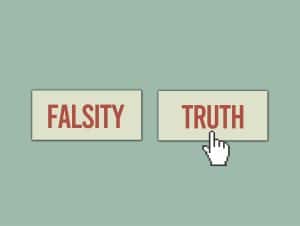Internet Marketing is a complex strategy for growth. Through many different facets such as business websites, social media, SEO, and dozens of other collaborative factors, your business is able to reach and sell towards a greater and greater audience. Because internet marketing is such a rich and complex topic, there are an abundance of myths about it. Be wary of misinformed information. To make your understanding of the process simpler, we have compiled a list of common Internet Marketing myths and debunked them. The information below can help clarify your understanding of the internet marketing process and get you started on your way towards financial independence.
Myth #1: “I just need more content.”
Content creation is an essential part of establishing your business’ and your website’s presence online. Without sufficient content, users that visit your website will not have much to engage with and may quickly detach from your business. It is important to have a diverse range of content on your website in order to augment the user experience and to engage site visitors. Make sure that you are utilizing text, images, videos, and even audio clips to deliver an adequate experience.
However, the amount of content you have is not the only factor in regard to how well your website performs. Just having content isn’t enough, you have to ensure that your content is quality and adheres to SEO standards. If you are not properly keywording, linking, and labeling metadata within your content, you are not appealing to search engines and are actively losing out on results. Keep regularly uploading content to your website and/or social media pages, but make sure that you are targeted search engines and users as you do so.
Myth #2: “Inbound Marketing isn’t a permanent solution.”
Inbound Marketing is a more recently developed method to internet marketing and marketing in general. Rather than using marketing to push a brand and create brand loyalty, inbound marketing first focuses on generating leads and leading people towards a website/social media page and into a sales funnel. Like all strategies, Inbound Marketing displays successes and failures throughout many individual businesses. This has led many to believe that Inbound Marketing isn’t a permanent solution, and that it is merely an internet fad that yields quick results for now.
This is untrue. As with all business strategies, there are seasons in which businesses have to adapt how they do things in order to meet the ever-changing needs and constraints of both consumers and technology. The internet has increased this rate of change exponentially, especially in the wake of smart phones. Inbound Marketing is simply the latest extension of a long chain of adaptive techniques. The brand first approach to marketing is effective, but it comes from a different era. Inbound Marketing shouldn’t be your only marketing strategy, but it is certainly a useful tool to be used now and in the years to come.
Myth #3: “Branding isn’t a priority.”
If Inbound Marketing is a solution, then why waste time and energy pushing a brand? Brand priority is an outdated tactic from the ages of television and newspaper ads, right? Both of these questions are important to consider. It is true that the pertinence of pushing a brand, and what that push looks like, has shifted greatly in the internet age. However, just because the rules regarding branding have changed to adapt with technology, it doesn’t mean that branding is no longer a priority.
You need your brand for customers to identify with. Your logo, slogan, or any other identifying factors should make your business instantly stand out among the competition. Just because you are shifting focus to lead generation and visitors, doesn’t mean you should be comfortable with a less than adequate branding strategy. As discussed in a recent post, branding is an essential element of establishing and maintaining your customer base, it is what keeps leads coming back for more.
Myth #4: “Internet Marketing doesn’t have a reliable ROI”
Internet Marketing is a hot button topic. However, it is important to understand that marketing techniques don’t yield universal results across all products, platforms, and classifications of business. What works for a company on the S&P 500 doesn’t necessarily yield similar results for a mom and pop store that just opened up. However, Internet Marketing is practically universally available to businesses of all sizes and scales. The argument that Internet Marketing doesn’t have a reliable return on investment (ROI) is aimed primarily at inbound marketing. While it is true that not all leads will become paying customers, the paying customers from those leads can often not be easily targeted without using modern, internet marketing strategies.
Myth #5: “Internet Marketing drives costs without driving revenues”
Many will argue that Internet Marketing strategies drive spending costs without bringing in the revenues to justify that expense. After all, social media advertising platforms often charge based on the number of clicks generated, but you only get paid if that click is funneled through the entire process. Many will use this logic as a justification for not pursuing Internet Marketing or for disregarding it entirely.
However, there are plenty of methods with which to market your business on the internet. Using a social media website’s advertising platform or paying for other website’s to advertise your business can be costly, but it is not the only route to success. Frequent search engine optimization, an active social media presence, and regular content creation can be achieved at no or minimal cost, leading to a much greater ROI per lead and per sale.
Myth #6: “Social Media is all my business needs”
Because of the cost of advertising or paying someone else to create content and perform search engine optimization, many businesses adhere to a belief that a social media presence is all they need. After all, it doesn’t cost anything out of pocket to create a business page and post. Many first time business owners also believe that a social media profile can take the place of a primary website. These beliefs are both incorrect.
While social media is a great method for building an audience and directing users towards a sales funnel, it is rarely successful on its own. In order to get the best search results and sales funnel yields, you need to maintain an independent website. This site acts as a hub not only for leads generate via social media, but for search engine results and an efficient sales funnel.
Myth #7: “Social Media is unnecessary if you have a proper website”
In contrast to Myth #6, there are many who believe that social media is unnecessary if they maintain an independent website. After all, the main focus of a social media profile is to generate leads and funnel them into the independent website anyways. However, an independent website does not possess the tools available to a business page or profile on almost every social media platform.
In particular, social media has dozens of “free” methods for attracting customers. Whenever your content gets liked, shared, or sent, your business is being put in front of dozens of other profiles within seconds. Social Media is necessary in conjunction with an independent website, because the two can work collaboratively to generate the most leads and convert more of those leads into sales.
Myth #8: “Social Media isn’t a priority in my industry”
Typically, among older business owners, or at least those with a previously established marketing strategy, the argument that social media isn’t an industry priority comes into play frequently. This can be true to a certain extent, but it is impossible to ignore the sheer billions of users that have a social media profile and/or spend hours a week browsing social media sites. There are many different platforms to choose from, if you are not finding expected results from marketing on a particular platform, then it may be time to choose a different platform and explore the opportunities that it presents. Facebook, Twitter, YouTube, and other platforms all market differently and are prioritized differently within each industry. Do your research and plug into the social media platform that best fits your needs.
Myth #9: “My customers aren’t concerned with a mobile site”
Smart Phone usage has eclipsed desktop computer usage. More users browse the web with a mobile device than they do with a desktop. If a mobile website isn’t a priority for your business, you are setting yourself up for failure. Meet search engine and user standards by prioritizing your mobile website, because it is a priority for your potential customers.
Myth #10: “My Customers aren’t concerned with a desktop site”
Just because mobile websites are the priority, it doesn’t mean that desktop websites can be disregarded completely. Remember that the desktop version of a website is still a priority for many users, and that when looking intently at your content, products, and services, many users will wish to utilize the extra screen space and computing power that a desktop website offers. Keep your desktop site up to date and use it in addition to your mobile website.
Myth #11: “A Website Redesign will fix my marketing issues”
While a website redesign may update the aesthetic of your content, it cannot change the quality. Website redesigns can be useful when updating to fit the preferences of a modern audience, but if your SEO processes and software are behind the times, a new look will only carry your website so far. Instead of redesigning your website in hopes of achieving better results, look for ways to redesign your created content. Where can you place a greater emphasis on your brand? What parts of SEO are not being performed appropriately? How does your content compare in quality to competitors and collaborators? By evaluating and redesigning your delivery, you can greatly improve your website and your marketing results. Don’t just slap a fresh coat of paint on your website, go the extra mile and make sure that your website’s engine is in its best shape.
Myth #12: “We don’t have the resources to market on the internet”
It takes very few resources to make critical internet marketing steps. In fact, most website hosting platforms provide you with ample SEO and marketing tools at little to no additional charge. If you are not taking full advantage of the tools already at your disposal, then you are wasting resources. The abundance of these resources is hardly ever the problem. Even if you are the sole employee of your business, there are boundless resources available to ensure that your business is being marketed completely and effectively.
Myth #13: “My current client base is fine; I don’t need to market to other audiences.”
This line of thinking is extremely narrow-minded. If you are not marketing to as many appropriate audiences as possible, then you are wasting the potential of your business, as well as denying opportunity to those who clamor for what it has to offer. If you intend for your business to continue growing steadily, you need to search out additional target markets that you are not currently or appropriately tapping into.
Myth #14: “All created content should focus solely on my business”
While it is important to center your content around your business, not all content available on your website has to directly engage with your specific products and/or services. Remember that most pages on your website are mere segments within a larger sales funnel. Often times, articles, images, and videos that relate to a different business or specific target group of users helps to keep users engaged with your business and moving through the sales funnel.
Conclusion
Internet Marketing is a very diverse group of strategies and procedures that can help your business establish or grow a customer base. Because of how expansive and volatile Internet Marketing and its results can be, many people find themselves confused and buying into Internet Marketing myths. Don’t get caught up in rumors and the frustrations of people not seeing their expected results right away. Instead, understand these myths and play with different Internet Marketing concepts to find the means of your business’ greatest results.
Link to Original Featured Image: https://www.sketchport.com/drawing/4646731924897792/myth




















